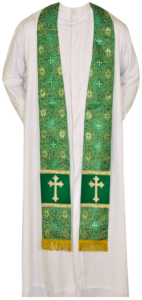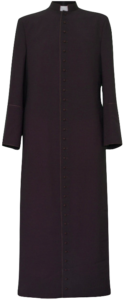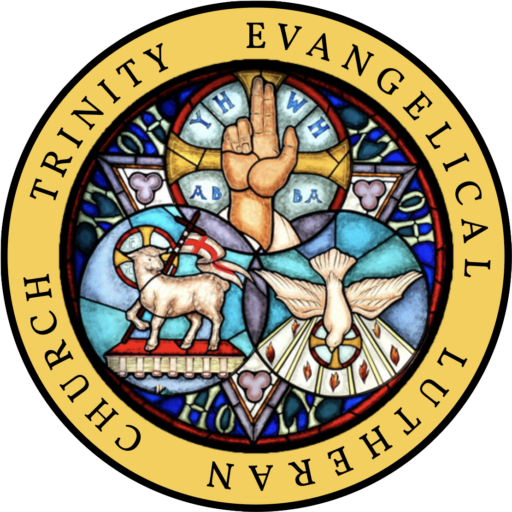FREQUENTLY ASKED QUESTIONS
One or more greeters will greet you and hand you a service folder as you enter. You can then enter the sanctuary and find a seat that suits you. As far as dress goes, we have no dress code, but a general rule of thumb is to wear what you would wear in public for some other occasion/event (high school musical performance, dinner at a sit-down restaurant, etc.).
Our Sunday services typically last a little longer than an hour (about an hour and fifteen minutes on Communion Sundays). We usually follow one of three orders of service that are found on pages 154–203 of our blue hymnal. Your service folder will contain an outline of the service and the Scripture readings. The pastor helps worshipers follow along and indicates when to stand, sit, etc. You are asked to sit and stand with everyone else (unless you are physically unable), but as far as speaking, singing, or praying goes, do what you’re comfortable doing. If you are completely unfamiliar with what we believe and teach, we actually encourage you not to participate, but simply to observe and listen. We gather an offering not long after the sermon, but it is freewill and non-compulsory.
We celebrate something called Holy Communion, or the Lord’s Supper, toward the end of some of our services. See the next question and answer for more information.
On certain Sundays we celebrate the Lord’s Supper or Holy Communion. We want to celebrate this special meal with everyone who attends our services. However, we want to do so only in the way that Jesus wants (1 Corinthians 1:10; 10:16–22; 11:17–32; Romans 16:17), since he instituted it, not we.
Out of love for both Jesus and you, therefore, we ask you to participate with us only if both of the following are true:
- You are already in doctrinal agreement with us—that is, a current, official member of Trinity or another church in our national church body (see our About page).
- You have examined yourself, in keeping with 1 Corinthians 11:28–31.
If you wish to participate with us, but are not yet in doctrinal agreement with us, please talk to our pastor after worship to pursue fellowship with us so that we may commune with you in the future.
Please note: If you are a member of another Christian church, our Communion practice is not a denial of your status as a believer in Jesus.
We would obviously like everyone who lives in our area to join our church. If we didn’t, you would rightly question the sincerity and value of our beliefs.
However, we are not a sect or cult. The further a group gets away from the truth of God’s word, the more they need to rely on peer pressure, manipulation, and downright deception in order to get people to join their group and remain in it. But we are convinced of the truth and power of God’s word. So we rely entirely on our message to do the convincing.
That is why we call our class for non-members interested in joining our church a Bible information class or Bible instruction class, not a membership class. (And it is only for non-members interested in joining our church; we do not try to force this class on non-members.) Our goal for this class is simply to present to you what Scripture teaches. If, at the conclusion of the class, you do not wish to become a member, we will doubtless see if we can address your reservations and will express some regret. But ultimately, we will wish you well and be grateful for the opportunity God gave us to share his word with you. You will receive no threats, explicit or implied, and we will still be cordial to you if we meet you outside of church.
If you do join our church, you are free to request a release from membership at any time. Again, we will make every effort to discuss the reason for that request with you and see if we can satisfactorily address your dissatisfaction, out of love for you and concern for your soul. But ultimately, if you are sure you want a release, we will grant you one without any conditions. You will receive no threats, explicit or implied, and we will still be cordial to you if we meet you outside of church.
If you are already a member of our national church body, the Wisconsin Evangelical Lutheran Synod, simply contact our pastor and request a transfer from your previous congregation. If you are a member of a different church body or not a member of any church, simply contact our pastor and ask to take a Bible information class with him.
Throughout its history, the Christian Church has taken instruction seriously. We want you to be thoroughly acquainted with Christian teaching before becoming a member. Our Bible information class consists of 21 lessons, and covers such topic as:
- Jesus’s life, death, and resurrection
- How we can be sure we have eternal life
- What saving faith is and how we get it and keep it
- Baptism
- Lord’s Supper
- Heaven and hell
- How the Ten Commandments apply to life at home, in society, and at church
- Prayer
- Origin of the universe
- Trinity
- Church fellowship, including difficult topics like why we practice close Communion, differences between confessional Lutheranism and other denominations, differences within Lutheranism (WELS, LC-MS, ELCA), and why those differences matter
- Stewardship of time, talents, and treasures
- Evangelism
- Historical overview of both the Christian Church as a whole and our specific congregation
- Antichrist
Class might be a misleading label. It isn’t so much a teacher spewing information at his students and imposing a heavy workload on them. It is more like a joint exploration, with the opportunity to ask challenging questions and have frank and honest discussions.
If you are a member of the Lutheran Church-Missouri Synod or are a self-directed learner who has already thoroughly studied Lutheranism, you may be eligible to take an abridged class or even to be received as a member upon a profession of faith. Talk with our pastor for more information.
The Bible gives simple answers to this question. Unfortunately, false ideas about important biblical concepts like repentance, faith, and original sin have crept into the church over the years. So those simple answers often do not suffice, and more involved answers need to be given.
Simple Answer #1
The apostle Peter preached to a crowd on Pentecost and told them (Acts 2:38–39):
Repent and be baptized, every one of you, in the name of Jesus Christ for the forgiveness of your sins. And you will receive the gift of the Holy Spirit. The promise is for you and your children and for all who are far off—for all whom the Lord our God will call.
This is probably the simplest and clearest passage in Scripture that tells us whom baptism is for. It is for a) adults who hear God’s word and repent—that is, acknowledge their sinfulness and trust in God for forgiveness in the name of his Son Jesus—and b) the children of such adults.
Simple Answer #2
Infant baptism is established by two facts, namely a) that infants, like everyone else, need to be saved from sin, death, and hell by God, and b) that God saves people through baptism. These Bible passages clearly proclaim both of those truths:
Certainly, I was guilty when I was born.
I was sinful when my mother conceived me.—Psalm 51:5
Jesus answered, “I tell you the truth, no one can enter the kingdom of God unless he is born of water and the Spirit. Flesh gives birth to flesh, but the Spirit gives birth to spirit.”—John 3:5–6
And corresponding to that [namely the water of the flood through which Noah and his family were saved], baptism now saves you—not the removal of dirt from the body but the guarantee of a good conscience before God through the resurrection of Jesus Christ.—1 Peter 3:21
Simple Answer #3
Because of both of the simple answers above, infant baptism was the standard practice in the Christian church from the time of the apostles up until the time of the Reformation in the 1500s. The apostles baptized entire households (Acts 16:15, 33–34; 1 Cor. 1:16). A Christian bishop named Cyprian wrote to a fellow bishop named Fidus around 252 AD (Epistle 58):
But with respect to the case of the infants, which you say ought not to be baptized within the second or third day after their birth, and that the law of ancient circumcision should be regarded, so that you think that one who has just been born should not be baptized and sanctified before the eighth day, we all [namely, Cyprian and sixty-five other bishops] thought very differently in our council. For no one agreed with the course you thought should be taken. We all rather judge that the mercy and grace of God should not be refused to anyone born of man.
Note that, even though Fidus held an incorrect view, he too was in favor of infant baptism, just not before the eighth day.
Many who reject infant baptism will appeal to the early Christian author Tertullian. It is true that Tertullian wrote a treatise On Baptism around 193 AD in which he advised the delay of baptism, especially in the case of little children (Chapter 18). However, it is important to note:
- Tertullian’s opinion is only his own. Compare that to the judgment of Cyprian above, which had the support of sixty-five other Christian bishops.
- Even as he is objecting to infant baptism, Tertullian acknowledges that it is, in fact, the ordinary Christian practice. He even says that Christians are “hastening” to have their infants baptized. He also mentions sponsors, which implies that the practice of having one or more adults sponsor an infant at his/her baptism was already in place.
Even when Christians postponed baptism until later in life in unique cases, like Augustine, they did so not for the reasons that are cited today, but because they erroneously thought that baptism only cleansed the sin that one had committed up to that point. So they still acknowledged it as a sacrament through which God washed away sin; they were just mistaken as to the extent of its effectiveness.
So a person who rejects infant baptism will have to take the problematic position that Christians on the whole didn’t understand baptism or use it correctly until the 1500s—even though the early Christians were the ones who had Jesus’s teaching handed down to them from Jesus’s own apostles and their disciples.
Detailed Answer
Click here for a more comprehensive scriptural explanation of why we baptize infants.
The white garment that our pastor usually wears is called an alb, and the scarf he wears is called a stole.
One of the biblical requirements of those who serve as public ministers in the Church is that they be “respectable” (1 Timothy 3:2). This trait doesn’t refer so much to their conduct (which is covered by the other traits Paul mentions in that section) as much as it does their appearance and dress.
 But what is “respectable” attire? There have always been about as many opinions about what is respectable as there are people. Oftentimes, however, the attire reminiscent of a bygone era has been considered to be respectable beyond dispute (as far as that is possible). For example: Think of a man in a tweed suit with a double-breasted waistcoat; he might look old-fashioned or out of place, but very few would call him unrespectable. Sometime between the 600s and 700s AD, Christians standardized the alb (from Latin albus = “white”) as respectable attire for pastors. It had once been the regular everyday attire of the Roman Empire; it may also hearken back to the priestly tunic mentioned in Exodus 28:39. Today pastors usually wear it only when presiding at the main weekly service, at festival services, and at funerals (when they need to appear “respectable” to the largest number of people).
But what is “respectable” attire? There have always been about as many opinions about what is respectable as there are people. Oftentimes, however, the attire reminiscent of a bygone era has been considered to be respectable beyond dispute (as far as that is possible). For example: Think of a man in a tweed suit with a double-breasted waistcoat; he might look old-fashioned or out of place, but very few would call him unrespectable. Sometime between the 600s and 700s AD, Christians standardized the alb (from Latin albus = “white”) as respectable attire for pastors. It had once been the regular everyday attire of the Roman Empire; it may also hearken back to the priestly tunic mentioned in Exodus 28:39. Today pastors usually wear it only when presiding at the main weekly service, at festival services, and at funerals (when they need to appear “respectable” to the largest number of people).
 Sometimes our pastor wears a cassock, a black robe of a cut similar to the alb. The cassock represents the everyday professional garb of the Middle Ages and Renaissance period—the equivalent of a suit and tie today. (A thicker version, called the Geneva robe, was worn in colder climates.) Thus, at first, wearing a cassock in the service represented a rejection of traditional liturgical vestments. However, over time the Geneva robe and cassock turned into their own vestment tradition in Reformed and Lutheran circles. Our pastor wears a cassock during non-Sunday or non-festival services, such as midweek Lent services, since those have traditionally been more informal, devotional-type services.
Sometimes our pastor wears a cassock, a black robe of a cut similar to the alb. The cassock represents the everyday professional garb of the Middle Ages and Renaissance period—the equivalent of a suit and tie today. (A thicker version, called the Geneva robe, was worn in colder climates.) Thus, at first, wearing a cassock in the service represented a rejection of traditional liturgical vestments. However, over time the Geneva robe and cassock turned into their own vestment tradition in Reformed and Lutheran circles. Our pastor wears a cassock during non-Sunday or non-festival services, such as midweek Lent services, since those have traditionally been more informal, devotional-type services.
The alb and cassock also serve as a reminder of the pastor’s representative function in worship. The special robe encourages people not just to see So-and-So, but also “the man God has appointed to proclaim his word to us.” The robe hides the man and emphasizes his position.
When our pastor wears an alb, he also wears a stole. Stole comes from a Greek word meaning simply “clothing” or “outfit.” It is a type of scarf worn over the alb in the color of the season of the church year.
It seems to have originated in the early Christian churches in the East, from where it made its way into the West. For example, the decrees of the Council of Laodicea (in the East) in 364 AD make references to a predecessor of the stole, the orarium, a sort of liturgical scarf, neckcloth, or kerchief, which perhaps mimicked a similar accessory formerly worn by Roman politicians as a sign of rank. The council forbade subdeacons, readers, and singers from wearing this liturgical badge. By the 800s the stole was commonly worn by a variety of Christian public ministers.
Eventually it was adopted as a vestment identifying those who had been ordained to the priesthood or, in the Lutheran Church, to the pastoral ministry. (Vicars or pastoral interns, for instance, do not wear a stole.) In our rite of ordination, the officiating pastor says to the candidate, “Receive this stole as a sign of your work, and walk in obedience to the Lord Jesus.”
The stole was lengthened over the years, making it a natural symbol for the yoke of Christ (Matthew 11:28–30) and servitude to Christ. It is with this in mind that, ever since the 1500s, a cross has been sewn on the middle part of the stole that sits on the minister’s neck. It is traditional for the minister to focus on the cross and to say a prayer when putting it on, asking Christ to make him his faithful servant as he carries out the gospel ministry.
